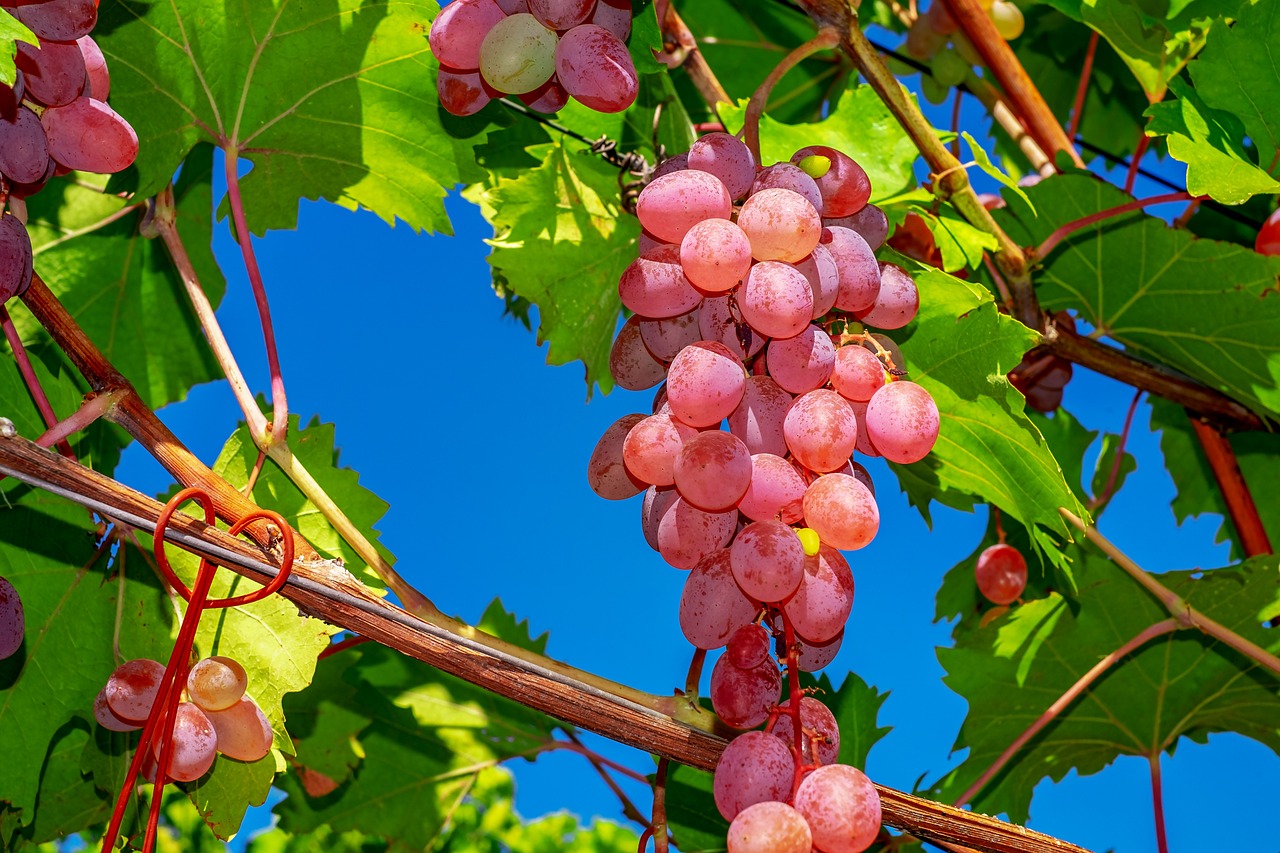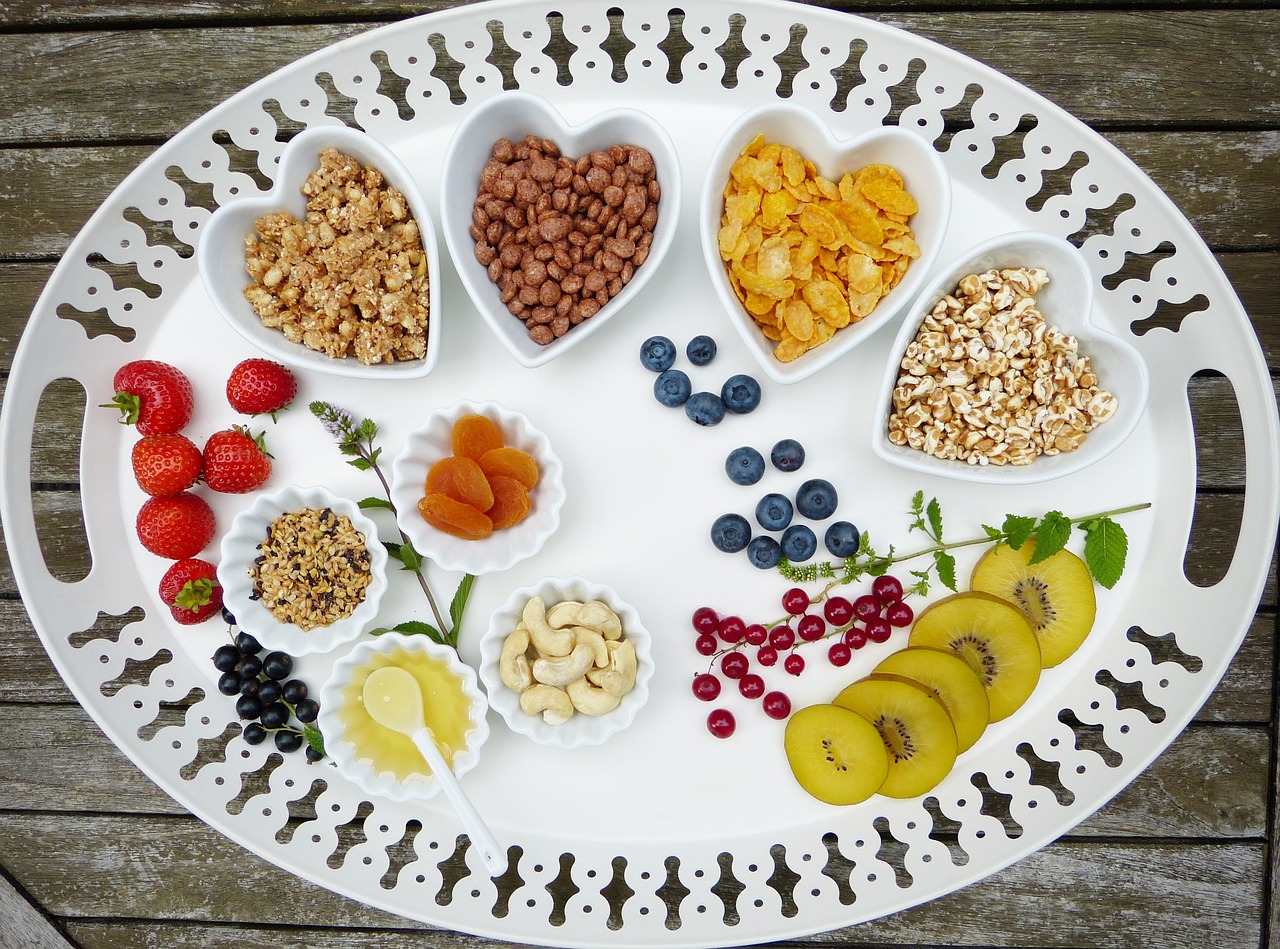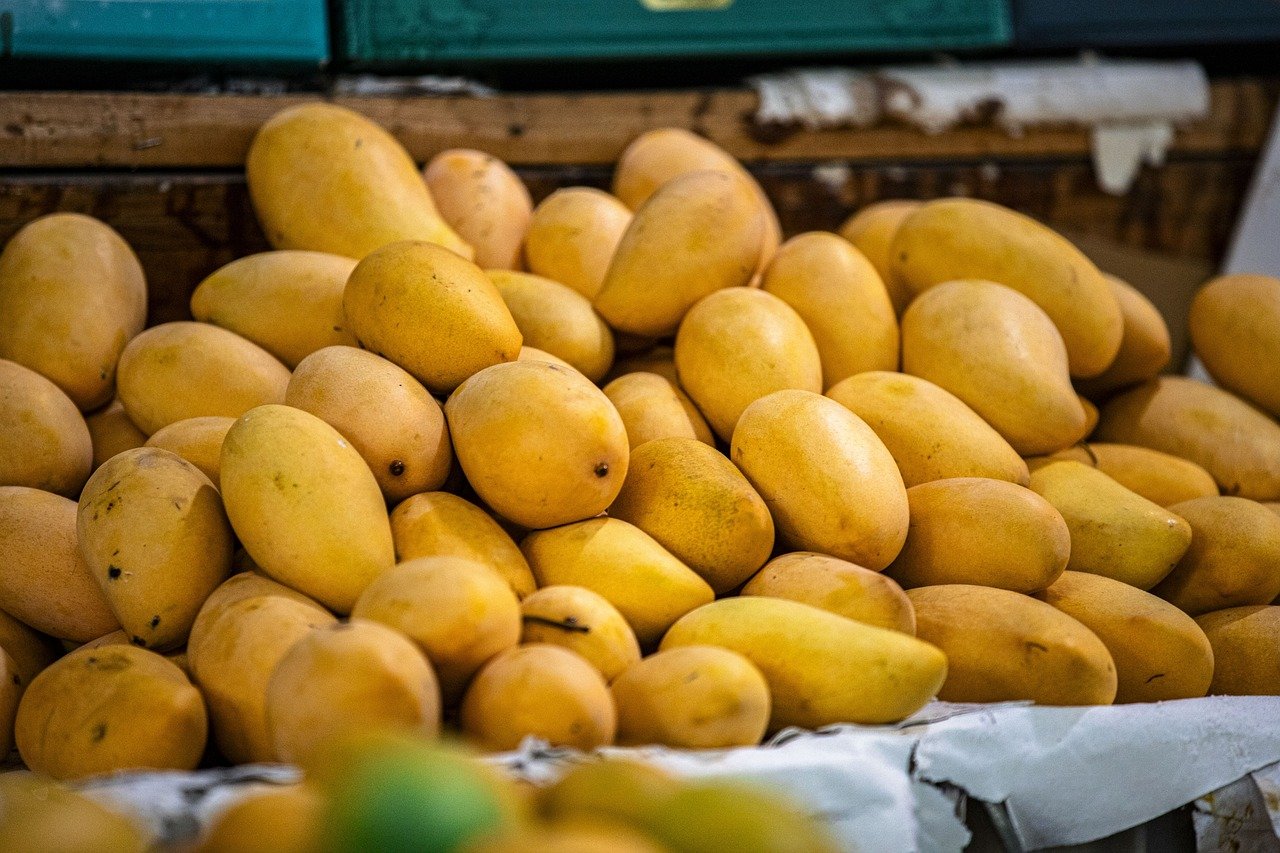How to Reduce Your Food Miles for a Healthier Planet?
In today's world, where environmental concerns are at the forefront of our collective consciousness, understanding how our food choices impact the planet is more important than ever. The term food miles refers to the distance food travels from the farm to our tables. This seemingly simple metric can have profound implications for our environment. The longer the distance, the greater the carbon emissions associated with transportation, packaging, and storage. In this article, we'll explore effective strategies to minimize food miles, highlighting their environmental impact while offering practical tips for consumers to make more sustainable food choices.
Food miles are not just a number; they represent a significant part of the environmental puzzle. When we think about the food we consume, we often overlook the journey it has taken to reach us. From the farms where it was grown to the grocery store shelves, each step along the way contributes to its overall carbon footprint. The significance of food miles lies in their direct correlation to greenhouse gas emissions. For instance, transporting food over long distances requires fuel, which releases carbon dioxide and other harmful gases into the atmosphere. By understanding food miles, we can begin to appreciate the importance of choosing local and seasonal options, thereby reducing our ecological footprint.
The transportation of food has a staggering impact on our planet. According to studies, food transportation accounts for approximately 11% of total greenhouse gas emissions in the United States alone. This figure is alarming, considering the rising levels of global warming and climate change. When food is shipped from distant countries, it often travels by truck, ship, or plane, each mode of transport contributing to emissions. For example, air freight produces nearly 50 times more carbon emissions than shipping by sea. Reducing food miles is not just about saving fuel; it's about fostering a healthier planet for future generations.
Not all foods are created equal when it comes to their carbon footprints. For instance, animal products tend to have a much higher environmental impact compared to plant-based foods. A recent study found that beef has a carbon footprint of about 27 kg CO2e per kg, while vegetables average around 2 kg CO2e per kg. This stark contrast highlights the benefits of choosing local and seasonal produce, which not only tastes better but also comes with a significantly lower carbon footprint. By opting for fruits and vegetables that are in season in your region, you can enjoy fresher, tastier options while contributing to a more sustainable food system.
When comparing local and imported foods, the differences in environmental impact become even clearer. Local foods typically travel a much shorter distance, resulting in reduced transportation emissions. For instance, a tomato grown in your backyard may have traveled mere miles to reach your plate, while one imported from another country could have traveled thousands of miles. By choosing local sources, you are not only reducing food miles but also supporting your community's economy. This creates a ripple effect, promoting sustainable practices and helping local farmers thrive.
Eating seasonally is another fantastic way to reduce food miles. When you consume foods that are in season, they are often harvested at their peak ripeness, leading to enhanced flavor and nutrition. Plus, seasonal foods are usually grown closer to home, which means they have a smaller carbon footprint. For example, enjoying fresh strawberries in the summer instead of imported ones in winter not only supports local farmers but also allows you to savor their delicious taste. Embracing seasonal eating can transform your meals into a celebration of what nature has to offer throughout the year.
Now that we understand the impact of food miles, let's dive into some practical strategies you can implement to lower your own food miles. Here are a few actionable tips:
- Shop at local farmers' markets: These markets offer fresh produce that hasn't traveled far, reducing your carbon footprint.
- Join a Community Supported Agriculture (CSA) program: By subscribing to a CSA, you can receive seasonal produce directly from local farms.
- Plan your meals: Planning helps you make informed choices, reducing impulse buys that may not be local or seasonal.
- Grow your own food: Even a small herb garden can significantly cut down on food miles.
Buying from local farmers' markets and community-supported agriculture (CSA) programs can drastically reduce food miles. Not only does this practice benefit the environment, but it also strengthens local economies. When you purchase directly from farmers, you are ensuring that more of your money goes into the local community rather than large corporations. Supporting local agriculture fosters a sense of community and connection to the food you consume. It’s a win-win situation!
Farmers' markets are treasure troves of fresh, local produce with minimal transportation. Shopping at these markets not only provides you with a wide variety of seasonal fruits and vegetables but also fosters community engagement. You can meet the farmers who grow your food, learn about their practices, and make informed choices about what you eat. Plus, the vibrant atmosphere of a farmers' market is an experience in itself, making grocery shopping feel more like a social event.
Community Supported Agriculture (CSA) programs offer a direct link between consumers and local farms. By joining a CSA, you can receive fresh, seasonal produce on a regular basis, often at a lower cost than retail prices. This model not only reduces food miles but also helps farmers plan their crops based on community demand. It’s a great way to enjoy a variety of foods while supporting sustainable farming practices.
Educating yourself about food sourcing is crucial in today’s consumer landscape. By understanding where your food comes from and the impact it has on the environment, you can make informed decisions that minimize food miles. Look for labels that indicate local or organic sourcing, and don’t hesitate to ask questions at your grocery store or farmers' market. The more you know, the better choices you can make for both your health and the health of our planet.
1. What are food miles?
Food miles refer to the distance food travels from the producer to the consumer. The longer the distance, the higher the associated carbon emissions.
2. How do food miles impact the environment?
Food transportation contributes significantly to greenhouse gas emissions, impacting climate change and environmental degradation.
3. What are some easy ways to reduce food miles?
You can reduce food miles by shopping at local farmers' markets, joining a CSA, planning meals, and growing your own food.
4. Why is seasonal eating important?
Seasonal eating promotes the consumption of fresh, local produce while reducing transportation emissions associated with out-of-season foods.
5. How can I find local food sources?
Look for farmers' markets, local grocery stores that carry regional products, and online directories that list local farms and CSA programs.

Understanding Food Miles
Food miles, a term that may seem simple at first glance, actually encompasses a significant aspect of our food system. Essentially, food miles refer to the distance food travels from where it is produced to where it is consumed. This journey can involve multiple modes of transportation, including trucks, ships, and planes, all of which contribute to the overall carbon footprint of the food we eat. It's not just about the distance; it's about the energy consumed and the emissions released during that journey.
Why should we care about food miles? Well, the environmental impact is staggering. Each mile that food travels adds to its carbon emissions, contributing to climate change and environmental degradation. For instance, consider this: a head of lettuce grown in California and shipped to New York has traveled over 2,500 miles! This extensive transportation not only increases the cost of food but also contributes to greenhouse gas emissions that are detrimental to our planet. The more we understand the concept of food miles, the more empowered we become to make choices that are not only beneficial for our health but also for the environment.
Moreover, food miles are a crucial part of the broader conversation about sustainability in our food systems. By being aware of how far our food has traveled, we can make more conscious decisions that align with our values. For example, opting for local produce not only supports local farmers but also significantly reduces the distance food travels, thereby lowering its carbon footprint. This is where the concept of local food systems comes into play, emphasizing the importance of sourcing food closer to home.
In addition to understanding food miles, it’s essential to recognize the role of seasonality. Eating foods that are in season in your region not only enhances flavor but also minimizes the need for long-distance transportation. When we choose seasonal produce, we support local agriculture and reduce the environmental impact associated with transporting out-of-season foods from far-off places.
To summarize, understanding food miles is about more than just numbers; it's about making informed choices that benefit both our health and the planet. By being mindful of how far our food travels, we can take significant steps toward reducing our overall carbon footprint. So, next time you pick up an item at the grocery store, consider its journey and the impact it has on our environment.

The Environmental Impact of Food Transportation
When you think about what goes into your meals, have you ever considered the journey your food takes before it reaches your plate? The transportation of food has a significant environmental impact, contributing to greenhouse gas emissions that harm our planet. In fact, food transportation accounts for a substantial portion of the overall carbon footprint associated with our food systems. Every time we choose to import food from far-off places, we are not just opting for convenience; we are also increasing our reliance on fossil fuels, which leads to a cascade of environmental consequences.
Transporting food over long distances requires energy, and this energy often comes from non-renewable sources, further exacerbating climate change. The trucks, ships, and planes used to transport food release carbon dioxide and other harmful pollutants into the atmosphere. According to a study by the Environmental Protection Agency (EPA), the transportation sector is responsible for about 29% of total greenhouse gas emissions in the United States. This figure highlights the urgent need for consumers to reconsider their food choices and the distances their food travels.
Moreover, it's not just about the emissions; the impact of food transportation extends to various environmental factors, including:
- Air Quality: Transportation emissions contribute to air pollution, which can lead to respiratory issues and other health problems.
- Habitat Destruction: Infrastructure required for food transport, such as roads and railways, can disrupt local ecosystems and wildlife habitats.
- Resource Depletion: Long-distance food transport often relies on large quantities of water and energy, straining local resources.
So, why should we care? The answer is simple: reducing food miles is a crucial step towards achieving a healthier planet. By choosing locally sourced foods, we can significantly cut down on the emissions associated with transportation. Not only does this practice benefit the environment, but it also supports local economies and promotes community engagement.
As consumers, we hold the power to make informed choices that can lead to profound changes. By being conscious of the environmental implications of our food transportation choices, we can contribute to a more sustainable future. It's about making the effort to seek out local produce, understanding the journey of our food, and taking steps to minimize our carbon footprint. Remember, every small change counts, and collectively, our choices can lead to a significant impact.
- What are food miles? Food miles refer to the distance food travels from the place of production to the consumer's plate.
- How do food miles affect the environment? Longer food miles typically lead to higher carbon emissions due to the energy required for transportation, contributing to climate change.
- What can I do to reduce food miles? You can reduce food miles by purchasing local and seasonal produce, shopping at farmers' markets, and joining community-supported agriculture (CSA) programs.

Carbon Footprint of Different Foods
The carbon footprint of food is a crucial aspect to consider when aiming for a more sustainable lifestyle. Not all foods are created equal in terms of their environmental impact. For instance, the distance food travels, the methods used in its production, and the resources consumed during its lifecycle all contribute to its overall carbon emissions. By understanding these factors, consumers can make informed choices that not only benefit their health but also the planet.
Let's break down some common foods and their associated carbon footprints. A study by the Food and Agriculture Organization (FAO) highlights that animal products generally have a higher carbon footprint compared to plant-based foods. For example, producing a kilogram of beef can emit approximately 27 kilograms of CO2, while the same amount of lentils emits only about 0.9 kilograms of CO2. This stark difference illustrates the significant impact our dietary choices can have on the environment.
| Food Type | Carbon Emissions (kg CO2 per kg) |
|---|---|
| Beef | 27 |
| Lamb | 39 |
| Pork | 12 |
| Chicken | 6 |
| Eggs | 4.8 |
| Milk | 1.2 |
| Lentils | 0.9 |
| Potatoes | 0.4 |
As you can see from the table above, plant-based foods like lentils and potatoes have a significantly lower carbon footprint compared to meat products. This doesn't mean we have to eliminate meat from our diets entirely, but it encourages us to consider incorporating more plant-based meals into our weekly menus. Imagine swapping out one meat-based dish for a delicious lentil curry or a hearty vegetable stew—your taste buds and the planet will thank you!
Moreover, the seasonality of produce plays a vital role in reducing food miles and carbon emissions. When fruits and vegetables are in season locally, they require less energy for transportation and storage. This not only means fresher and tastier options for your meals but also a smaller carbon footprint. So, next time you're at the grocery store, think about what’s in season and opt for those items.
In conclusion, being aware of the carbon footprint associated with different foods empowers us to make better choices. By prioritizing local and seasonal produce, and by leaning more towards plant-based options, we can significantly reduce our food miles and contribute to a healthier planet. Every small choice counts, and together, we can make a big difference!
- What are food miles? Food miles refer to the distance food travels from where it is produced to where it is consumed.
- Why should I care about food miles? Reducing food miles can lower carbon emissions, support local economies, and promote sustainable farming practices.
- How can I reduce my food miles? You can reduce your food miles by shopping locally, eating seasonal produce, and choosing plant-based foods.
- Are all local foods better for the environment? Not necessarily. It's important to consider how the food is produced as well as how far it travels.

Local vs. Imported Foods
When it comes to our food choices, the debate between local and imported foods is more than just a matter of taste; it's a significant factor in our environmental impact. Imagine biting into a juicy, ripe tomato that was picked just hours ago from a nearby farm versus one that traveled thousands of miles, losing its freshness along the way. The reality is that local foods not only taste better, but they also have a much smaller carbon footprint compared to their imported counterparts.
One of the primary reasons for this is the transportation emissions associated with imported foods. When food is transported over long distances, it requires fuel, which contributes to greenhouse gas emissions. To illustrate this point, consider the following table that compares the average food miles of local and imported foods:
| Type of Food | Average Food Miles (miles) | Carbon Footprint (CO2 emissions in kg) |
|---|---|---|
| Local Produce | 50 | 0.5 |
| Imported Produce | 1,500 | 5.0 |
This stark contrast highlights how supporting local agriculture can lead to significant reductions in both food miles and carbon emissions. By choosing local, you are not only helping the environment but also boosting your local economy. Local farms tend to reinvest in their communities, creating jobs and fostering a sense of community pride.
Moreover, local foods often come with the added benefit of being fresher. Since they don't have to endure long transport times, they can be harvested at peak ripeness, ensuring that you get the most flavorful and nutritious options available. In contrast, imported foods are often picked early and may be treated with preservatives to prolong shelf life, sacrificing taste and nutrition in the process.
However, it's essential to recognize that not all local food choices are created equal. Sometimes, local foods can be more expensive due to their smaller scale of production. But when weighing the costs, consider the long-term benefits of sustainability and supporting local farmers. It's an investment in both your health and the planet's future.
In conclusion, opting for local over imported foods is a simple yet impactful way to reduce your food miles. By making conscious choices about where your food comes from, you can enjoy fresher produce while contributing to a healthier planet. So next time you're at the grocery store or farmers' market, think about the journey your food has taken and choose wisely.
- What are food miles? Food miles refer to the distance food travels from production to consumption, which can significantly impact the environment.
- Why should I choose local foods? Local foods generally have a smaller carbon footprint, are fresher, and support local economies.
- How can I find local food sources? Look for farmers' markets, community-supported agriculture (CSA) programs, or local grocery stores that prioritize local produce.
- Are local foods always more expensive? While they can be pricier, the benefits to health, taste, and the environment often outweigh the costs.

Seasonal Eating
Have you ever bitten into a juicy, sun-ripened strawberry in the peak of summer and thought, "Wow, this is what fruit is supposed to taste like!"? That's the magic of . When we consume fruits and vegetables that are in season, not only do we enjoy the freshest and most flavorful produce, but we also significantly reduce our food miles. Seasonal eating means choosing foods that are harvested at their prime in your local area. This practice supports local farmers and ensures that the food on your plate is at its nutritional best.
But why is this important? First off, seasonal produce is often grown closer to home, which means it doesn't have to travel far to reach your table. This drastically cuts down on the carbon emissions associated with transportation. For instance, a tomato grown in your backyard or a nearby farm will have a much lower carbon footprint than one that has traveled thousands of miles from another country. It's like comparing a cozy, home-cooked meal to a fast-food burger—one is made with love and care, while the other is just a quick fix.
Moreover, seasonal eating can lead to a more varied and exciting diet. Each season brings its own bounty of flavors and textures. In spring, you might enjoy tender asparagus and vibrant radishes, while summer is perfect for sweet corn and ripe peaches. Autumn ushers in hearty squash and crisp apples, and winter often delights us with root vegetables and citrus fruits. By embracing seasonal produce, you not only get to experience a diverse array of tastes but also support biodiversity in agriculture.
Here’s a quick comparison of some seasonal produce:
| Season | Fruits | Vegetables |
|---|---|---|
| Spring | Strawberries, Cherries | Asparagus, Spinach |
| Summer | Peaches, Watermelon | Tomatoes, Cucumbers |
| Autumn | Apples, Pears | Squash, Brussels Sprouts |
| Winter | Oranges, Grapefruits | Carrots, Potatoes |
In conclusion, seasonal eating is not just a trend; it's a lifestyle choice that benefits your health, your taste buds, and the planet. So next time you’re at the grocery store or farmers' market, take a moment to consider what’s in season. Your body and the environment will thank you!
Q: What does it mean to eat seasonally?
A: Eating seasonally means choosing fruits and vegetables that are harvested during their natural growing season in your local area. This reduces food miles and enhances flavor.
Q: How can I find out what’s in season?
A: You can check local farmers' markets, consult seasonal produce guides online, or ask local farmers directly about what’s currently being harvested.
Q: Are there any health benefits to eating seasonally?
A: Yes! Seasonal produce is often fresher and more nutritious since it’s harvested at its peak ripeness. This means you’re getting more vitamins and minerals in your diet.
Q: Does seasonal eating save money?
A: Generally, yes! Seasonal produce is often more abundant and less expensive when it’s in season, making it a cost-effective choice for consumers.

Strategies for Reducing Food Miles
Reducing food miles is not just a trendy concept; it’s a vital step towards creating a more sustainable future. So, how can you make a difference in your everyday life? Here are some practical strategies that can help you minimize the distance your food travels, while also enhancing your eating experience.
First and foremost, buying local is one of the most effective methods to cut down on food miles. When you purchase food from local farmers or markets, you’re not only supporting your community, but you’re also significantly reducing transportation emissions. Think about it: food that comes from just a few miles away requires far less energy to transport than food that has traveled thousands of miles. Plus, local produce is often fresher and more flavorful!
Another effective strategy is to plan your meals around seasonal produce. Seasonal eating is like tuning into nature’s rhythm; it allows you to enjoy fruits and vegetables at their peak taste and nutritional value. Not to mention, seasonal foods are typically grown closer to home, which helps in reducing food miles. For example, if you live in a region where strawberries are in season, why not whip up a delicious strawberry shortcake instead of opting for out-of-season imports? This not only benefits your palate but also your planet.
Additionally, consider growing your own food. Whether it’s a small herb garden on your windowsill or a full-fledged vegetable patch in your backyard, cultivating your own produce can drastically reduce food miles. It’s a rewarding experience that connects you to your food in a way that shopping at a grocery store simply cannot. Plus, you can control what goes into your soil and your food, ensuring it’s as healthy as possible.
For those who prefer convenience, joining a Community Supported Agriculture (CSA) program is a fantastic option. By subscribing to a CSA, you receive a regular supply of fresh, local produce directly from farmers. This not only supports local agriculture but also helps you build a relationship with the people who grow your food. It’s like having a mini farm right at your doorstep!
Lastly, when shopping at the grocery store, be mindful of labels. Look for products that are labeled as local or regional. Many stores now highlight local produce, making it easier for you to make informed choices. You can also consider shopping at stores that prioritize sustainability and offer a wide selection of local foods. Your choices matter, and every time you choose local over imported, you’re making a statement about the kind of world you want to support.
In conclusion, reducing food miles is all about making conscious choices that benefit both you and the environment. By buying local, eating seasonally, growing your own food, joining a CSA, and being mindful of your shopping habits, you can significantly lower your food miles. Remember, every small change adds up to a big impact!
- What are food miles? Food miles refer to the distance food travels from where it is produced to where it is consumed. The longer the distance, the higher the carbon emissions associated with its transportation.
- Why should I care about reducing food miles? Reducing food miles helps decrease greenhouse gas emissions, supports local economies, and often results in fresher, tastier produce.
- How can I find local farmers or markets? You can search online for farmers' markets in your area, check local community boards, or use apps that connect consumers with local food producers.
- What is a CSA program? Community Supported Agriculture (CSA) programs allow consumers to subscribe to receive regular deliveries of fresh produce directly from local farmers.
- Is growing my own food difficult? It can be as simple or complex as you want it to be! Start small with herbs or easy-to-grow vegetables, and you’ll quickly learn what works best for you.

Shopping Locally and Supporting Farmers
When it comes to making a positive impact on our planet, shopping locally is one of the most effective strategies we can adopt. By choosing to buy from local farmers and markets, we not only reduce our food miles but also support our community's economy. Think about it: when you purchase a tomato grown just a few miles away, you're not only ensuring its freshness but also cutting down on the carbon emissions associated with long-distance transportation. It’s like choosing to ride a bike instead of driving a car; the benefits are immediate and far-reaching!
Visiting farmers' markets is a delightful way to engage with your local food scene. These markets are often bustling with life, filled with vibrant colors, enticing aromas, and the friendly faces of farmers eager to share their stories. When you shop at a farmers' market, you are not just buying food; you are investing in your community. It’s a chance to connect with the people who grow your food and to understand the effort that goes into each harvest. Plus, you get to enjoy seasonal produce that tastes infinitely better than anything that has traveled thousands of miles!
Another fantastic option is to join a Community Supported Agriculture (CSA) program. This model allows consumers to buy shares of a farm's harvest in advance, providing farmers with the necessary funds to grow their crops. In return, you receive a regular supply of fresh, local produce throughout the growing season. It’s like having a subscription box filled with nature’s bounty delivered to your door! Not only does this significantly reduce your food miles, but it also ensures that you are eating what is in season, which is not only better for the environment but also for your health.
Here’s a quick overview of the benefits of shopping locally and supporting farmers:
| Benefit | Description |
|---|---|
| Reduced Food Miles | Minimizes carbon emissions and promotes sustainability. |
| Freshness | Local produce is often harvested at its peak, ensuring superior flavor and nutrition. |
| Community Support | Buying locally strengthens the local economy and fosters community relationships. |
| Seasonal Eating | Encourages consumption of seasonal fruits and vegetables, enhancing variety in your diet. |
| Transparency | Direct access to farmers allows consumers to learn about their food sources and farming practices. |
In conclusion, shopping locally and supporting farmers is a powerful way to reduce your food miles while enjoying the freshest produce available. It’s a win-win situation that benefits not just you, but the entire community and our planet. So, the next time you’re tempted to grab that imported avocado, consider taking a trip to your local farmers' market instead. You might just discover a new favorite food and a newfound appreciation for the hard work that goes into producing it!
Q: What are food miles?
Food miles refer to the distance food travels from where it is produced to where it is consumed. The longer the distance, the higher the carbon emissions associated with that food.
Q: Why is shopping locally important?
Shopping locally reduces food miles, supports local economies, and often provides fresher, tastier produce. It also fosters community connections and promotes sustainable farming practices.
Q: How can I find local farmers' markets?
You can find local farmers' markets by searching online, checking community bulletin boards, or visiting local agricultural extension offices for recommendations.
Q: What is a CSA program?
A Community Supported Agriculture (CSA) program allows consumers to purchase a share of a farm's harvest in advance, receiving regular deliveries of fresh produce throughout the growing season.

Benefits of Farmers' Markets
Farmers' markets are not just a place to buy fresh produce; they are vibrant community hubs that offer a plethora of benefits for both consumers and local farmers. When you shop at a farmers' market, you are not only getting access to fresh, seasonal fruits and vegetables, but you are also contributing to the local economy. It's like a win-win situation where your shopping habits can directly impact your community positively.
One of the most significant advantages of farmers' markets is the freshness of the products. Unlike items found in traditional grocery stores, which may have traveled thousands of miles, the produce at farmers' markets is often harvested just hours before being sold. This means you are consuming fruits and vegetables at their peak flavor and nutritional value. Have you ever bitten into a tomato that was picked that same morning? It's an explosion of taste that you simply can't get from store-bought varieties.
Another compelling reason to frequent farmers' markets is the opportunity to connect with local farmers. When you buy directly from the source, you can ask questions about how the food is grown, what practices are used, and even get tips on how to prepare specific items. This connection fosters a sense of community and trust, as you know exactly where your food comes from. Plus, many farmers are more than happy to share their passion for sustainable farming and the environment, enriching your shopping experience.
Moreover, shopping at farmers' markets can significantly reduce your food miles. Since most of the food sold is produced locally, it doesn't require extensive transportation, which in turn lowers carbon emissions. In fact, studies have shown that food from farmers' markets can have a carbon footprint that is up to 10 times lower than that of conventional supermarket produce. This reduction in food miles is a critical step toward a more sustainable lifestyle.
Additionally, farmers' markets often offer a wider variety of heirloom and organic produce that you might not find in standard grocery stores. These unique varieties not only taste better but also contribute to biodiversity, which is crucial for resilient ecosystems. By supporting farmers who grow these diverse crops, you are playing a part in preserving agricultural heritage.
Let's not forget about the community engagement aspect of farmers' markets. They often serve as a social gathering place where people can meet, share recipes, and learn about healthy eating. This sense of community can lead to a stronger, more connected neighborhood, as locals come together to support one another and promote sustainable practices.
In conclusion, the benefits of farmers' markets extend far beyond just purchasing fresh produce. They provide an opportunity to support local economies, enjoy fresher and tastier food, connect with farmers, and contribute to a healthier planet. So, the next time you consider where to buy your groceries, think about visiting your local farmers' market. You might just find that it's more than just a shopping trip; it's an enriching experience for you and your community.
- What are farmers' markets? Farmers' markets are venues where local farmers sell their produce directly to consumers, often featuring seasonal fruits, vegetables, and other goods.
- Why should I shop at farmers' markets? Shopping at farmers' markets supports local farmers, reduces food miles, and provides access to fresher, tastier produce.
- How can I find a farmers' market near me? You can search online for local farmers' markets or check community bulletin boards for schedules and locations.
- What should I expect at a farmers' market? Expect a lively atmosphere with a variety of fresh produce, artisanal products, and the chance to meet local farmers and artisans.

Joining a CSA Program
Joining a Community Supported Agriculture (CSA) program is like hitting the jackpot for both your palate and the planet. Imagine receiving a box brimming with fresh, locally grown produce every week, handpicked by farmers who are passionate about their craft. Not only do you get to enjoy the freshest fruits and vegetables, but you also forge a direct connection with the people who grow your food. This relationship fosters a sense of community and trust that is often missing in the conventional grocery shopping experience.
One of the most compelling reasons to join a CSA is the reduction in food miles. When you source your food directly from local farms, you significantly cut down on the distance it travels to reach your plate. This not only minimizes carbon emissions associated with transportation but also supports the local economy. You're investing in your community while helping to create a more sustainable food system. Think of it as a win-win situation where your choices lead to a healthier planet.
Moreover, CSA programs often provide a variety of seasonal produce. This means that you’ll be eating fruits and vegetables at their peak flavor and nutritional value. Seasonal eating not only enhances your culinary experience but also encourages you to try new foods that you might not typically purchase at a supermarket. For instance, when you receive a box filled with kale, radishes, and heirloom tomatoes, it challenges you to get creative in the kitchen. You might discover a new favorite recipe or learn to appreciate a vegetable you previously overlooked.
Another advantage of joining a CSA is the freshness of the produce. Since the food is harvested just before it’s delivered, you can expect it to be much fresher than what you would find at a grocery store, where items may have been shipped long distances and stored for days or even weeks. Fresh produce not only tastes better but is also more nutritious, providing you with the vitamins and minerals your body craves.
Additionally, many CSA programs offer the option to customize your box based on your preferences. This flexibility ensures that you receive items you enjoy and reduces food waste. If you’re not a fan of beets, you can often swap them out for something you love, making the experience more enjoyable and tailored to your taste.
In terms of financial commitment, while some might view the upfront cost of a CSA subscription as a drawback, it’s essential to consider the long-term benefits. By paying upfront, you’re not just supporting local farmers; you’re also locking in the price of fresh produce, which can be more economical than purchasing organic items at a store. Plus, you’re likely to receive a greater volume of food for your money, especially during peak harvest times.
In summary, joining a CSA program is a fantastic way to reduce your food miles, enjoy fresher produce, and support local agriculture. It’s more than just a subscription; it’s a lifestyle choice that benefits your health, your community, and the environment. So why not take the plunge? Your taste buds and the planet will thank you!
- What is a CSA program? A CSA program connects consumers directly with local farmers, allowing them to receive fresh produce regularly.
- How do I find a CSA program near me? You can search online directories or visit local farmers' markets to discover CSA options in your area.
- What types of produce can I expect in a CSA box? The contents vary by season and farm, but you can expect a mix of fruits, vegetables, and sometimes herbs or flowers.
- Can I customize my CSA box? Many CSA programs allow for customization, letting you choose items based on your preferences.
- Is joining a CSA cost-effective? While there is an upfront cost, many find it more economical than purchasing organic produce at stores, especially over time.

Making Informed Food Choices
When it comes to , knowledge is your best ally. It’s not just about what you eat; it’s about where it comes from and how it impacts our planet. In today’s fast-paced world, we often grab whatever is convenient, but taking a moment to consider the origins of our food can lead to healthier choices for both ourselves and the environment. So, how can you become a more conscious consumer? Let’s dive in!
First off, understanding food labels is crucial. Many products boast labels like “organic,” “locally sourced,” or “sustainable,” but what do these terms really mean? For instance, “organic” indicates that the food was grown without synthetic pesticides or fertilizers, while “locally sourced” can vary widely in definition. It’s essential to do your homework and know what these labels signify to make choices that align with your values.
Another great way to reduce food miles is to familiarize yourself with seasonal produce. Eating fruits and vegetables that are in season not only enhances the flavor of your meals but also minimizes the distance your food has to travel. For example, in the summer, you might enjoy fresh strawberries and tomatoes, while in the fall, apples and squash are at their peak. By choosing seasonal options, you contribute to a more sustainable food system. Here’s a quick table to illustrate seasonal produce in different months:
| Month | Fruits | Vegetables |
|---|---|---|
| January | Apples, Oranges | Carrots, Kale |
| April | Strawberries, Cherries | Asparagus, Spinach |
| July | Peaches, Berries | Tomatoes, Zucchini |
| October | Pumpkins, Grapes | Broccoli, Brussels Sprouts |
Moreover, consider the impact of packaging on your food choices. Many products come wrapped in plastic, which not only adds to your food miles but also contributes to environmental pollution. Opting for products with minimal or recyclable packaging can significantly reduce your carbon footprint. Whenever possible, bring your own reusable bags and containers when shopping—this small change can lead to a big difference!
Lastly, don’t underestimate the power of community engagement. By joining local food groups or participating in community events focused on sustainability, you can learn more about where your food comes from and how to make better choices. Sharing knowledge with others helps create a ripple effect in your community, encouraging more people to think critically about their food consumption.
In conclusion, making informed food choices is a journey that begins with awareness and education. By understanding food labels, choosing seasonal produce, being mindful of packaging, and engaging with your community, you can significantly reduce your food miles while enjoying delicious, fresh food. Remember, every small change counts when it comes to creating a healthier planet!
- What are food miles? Food miles refer to the distance food travels from where it is produced to where it is consumed. The longer the distance, the greater the environmental impact.
- How do I know if my food is locally sourced? Look for labels that indicate local sourcing or ask your grocery store or farmers' market about the origins of their products.
- Why is seasonal eating important? Seasonal eating supports local farmers, reduces food miles, and often results in fresher, tastier produce.
- What are some ways to reduce packaging waste? Bring your own bags, choose bulk items, and select products with minimal or recyclable packaging.
Frequently Asked Questions
- What are food miles?
Food miles refer to the distance food travels from where it is produced to where it is consumed. The longer the distance, the more emissions are generated during transportation, which can negatively impact our environment.
- Why should I care about reducing food miles?
Reducing food miles is crucial because it helps lower greenhouse gas emissions, supports local economies, and promotes sustainable farming practices. By choosing local and seasonal foods, you can contribute to a healthier planet.
- How do food miles contribute to climate change?
Food transportation emits significant amounts of carbon dioxide and other greenhouse gases, which contribute to climate change. By minimizing food miles, we can reduce these emissions and help combat global warming.
- What are some practical ways to reduce my food miles?
You can reduce your food miles by shopping at local farmers' markets, joining a Community Supported Agriculture (CSA) program, and choosing seasonal produce. Planning meals around local ingredients is another effective strategy!
- Are there any benefits to shopping at farmers' markets?
Absolutely! Farmers' markets provide fresh, locally sourced produce with minimal transportation, which not only reduces food miles but also supports local farmers and fosters community engagement.
- What is Community Supported Agriculture (CSA)?
CSA programs allow consumers to buy shares of a farm's harvest in advance. This direct connection between farmers and consumers ensures fresher produce and significantly reduces food miles.
- How can I make informed food choices?
Educating yourself about where your food comes from is key. Look for labels indicating local sourcing, ask questions at markets, and research the environmental impact of the foods you consume.
- Does eating seasonally really make a difference?
Yes! Eating seasonally not only enhances the flavor of your meals but also reduces food miles since seasonal produce is often grown nearby and harvested at its peak, leading to fresher and more nutritious options.



















